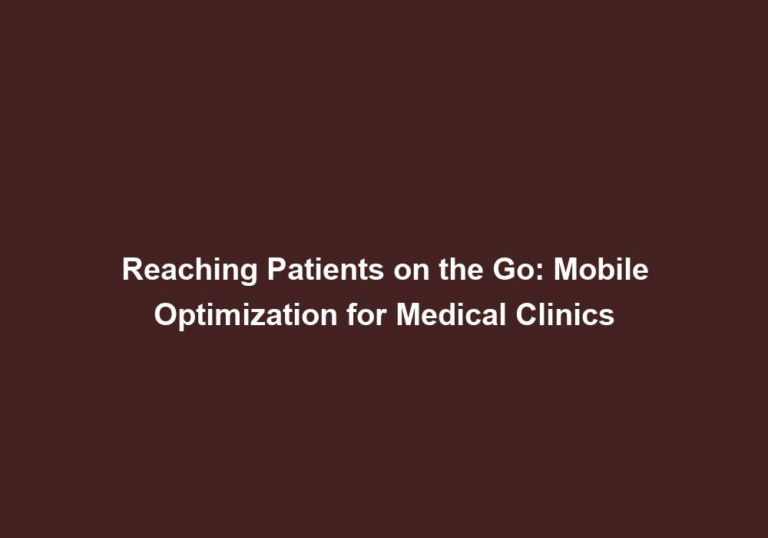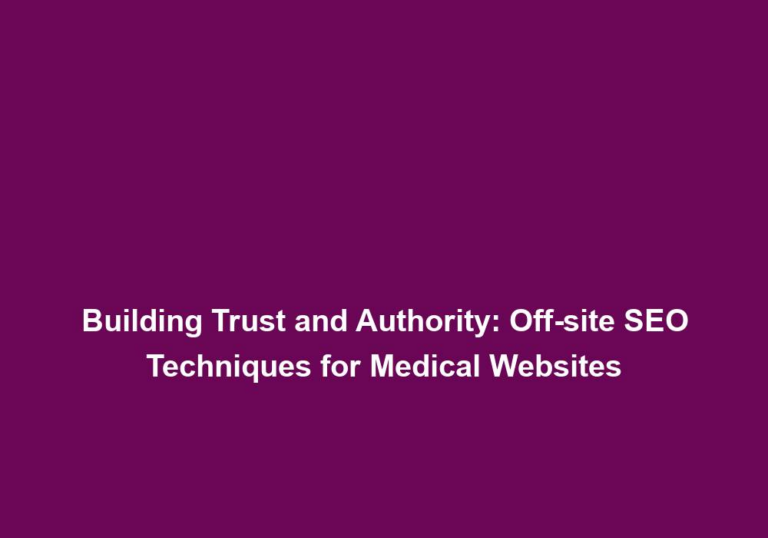Maintaining a Healthy Blog: Content Management Strategies for Medical Websites
In today’s digital age, having a well-maintained blog is crucial for medical websites. It not only helps in establishing credibility but also plays a significant role in attracting and engaging patients. However, managing a blog effectively requires careful planning and execution. In this article, we will discuss some content management strategies that can help medical websites maintain a healthy blog.
1. Define Your Target Audience
Before diving into creating content, it is essential to identify your target audience. Understanding who you are writing for will allow you to tailor your content to their needs and preferences. Consider the demographics, interests, and pain points of your audience to create relevant and engaging blog posts.
To expand on this, here are three paragraphs:
-
When defining your target audience, it’s important to conduct thorough market research. This involves analyzing demographic data such as age, gender, location, and income level. By understanding the characteristics of your target audience, you can create content that resonates with them and addresses their specific needs and concerns.
-
In addition to demographics, it’s also important to consider the psychographics of your target audience. Psychographics include factors such as personality traits, values, attitudes, and lifestyle choices. By understanding the psychographics of your audience, you can create content that aligns with their beliefs and interests, making it more likely to capture their attention and engagement.
-
Another important aspect of defining your target audience is identifying their pain points. Pain points are the challenges, problems, or frustrations that your audience faces. By understanding these pain points, you can create content that provides solutions, answers questions, and offers valuable insights, establishing your medical website as a go-to resource for your target audience.
2. Develop a Content Calendar
A content calendar is a valuable tool for staying organized and consistent with your blog posts. It helps you plan your content in advance, ensuring a steady flow of articles. Include key dates, healthcare observances, and seasonal topics relevant to your medical website. This approach enables you to maintain a diverse range of topics and keeps your audience engaged throughout the year.
Here are three paragraphs to expand on this topic:
-
When developing a content calendar, it’s important to consider the different stages of the patient journey. This includes awareness, consideration, and decision-making stages. By aligning your content with each stage, you can provide valuable information and guidance to your audience at every step of their healthcare journey.
-
In addition to considering the patient journey, it’s also important to take into account the different types of content formats that resonate with your audience. This can include blog posts, videos, infographics, podcasts, and interactive quizzes. By diversifying your content formats, you can cater to different learning styles and preferences, making your blog more engaging and appealing to a wider audience.
-
Another aspect to consider when developing a content calendar is incorporating evergreen content. Evergreen content is content that remains relevant and valuable over time. By including evergreen topics in your content calendar, you can ensure that your blog has a consistent flow of high-quality content that continues to attract and engage readers long after it is published.
3. Conduct Thorough Keyword Research
To optimize your blog posts for search engines, keyword research is essential. Identify relevant keywords and phrases that potential patients may use to search for medical information. Incorporate these keywords naturally into your blog posts to improve their visibility in search engine results. Tools like Google Keyword Planner, SEMrush, or Moz Keyword Explorer can assist you in finding valuable keywords for your content.
Here are three paragraphs to expand on this topic:
-
When conducting keyword research, it’s important to consider both short-tail and long-tail keywords. Short-tail keywords are shorter and more generic, while long-tail keywords are longer and more specific. By incorporating a mix of both types of keywords, you can attract a broader audience while also targeting more specific search queries.
-
In addition to keyword research tools, it’s also important to analyze the search intent behind the keywords you choose. Search intent refers to the reason behind a user’s search query. By understanding the intent behind the keywords, you can create content that directly addresses the user’s needs and provides valuable information or solutions.
-
Another aspect to consider when conducting keyword research is analyzing the competition for each keyword. This involves looking at the websites and blogs that currently rank for the keywords you want to target. By understanding the competition, you can identify opportunities to create content that is more comprehensive, valuable, and optimized than what is currently available, increasing your chances of ranking higher in search engine results.






